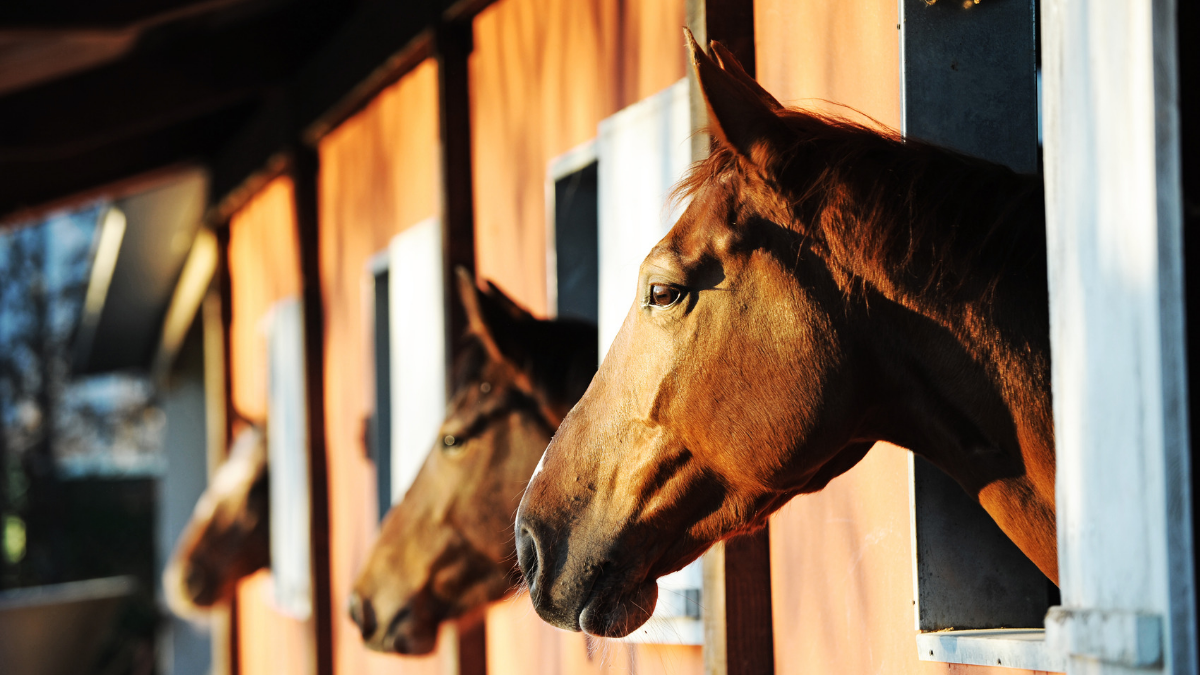After hearing rave reviews about Gerry Duffy’s presentation at ONE: The Alltech Ideas Conference (ONE19), I felt compelled to visit with him and learn more about what led him to his current role as stud manager at Godolphin’s Stonerside and Raceland Farms in Paris, Kentucky.
Cait: Can you tell me a bit about your background with horses?
Gerry: I first got into horses from a riding perspective. I grew up riding ponies and later got into showjumping and really gravitated toward the industry through my love of horses. In fact, my first job involved working in the stable yard at a stud farm near where I grew up. It had 10 mares, foals and yearlings, and it was there that I met a great guy by the name of David Cunningham, who taught me about pedigrees and would take me along to sales and tell me what to look for. Everyone needs someone to take an interest in them and make them feel they are a part of something special — it’s especially important for young people to feel a connection to their workplace, and I was fortunate enough to have that.
Cait: You have an undergraduate degree in mechanical engineering. Given your passion for horses, I’m curious: what led you to that particular course of study?
Gerry: I love engines, machinery and tractors, so mechanical engineering was always very appealing to me. At the time, I was still of the belief that horses were a hobby, and I didn’t see it as a career option for me, especially when I mucked stables for £2.50 an hour as a kid! I was close to graduation when the owner of the farm I was working for mentioned the possibility of going to work at his farm in Kentucky. At the same time, a friend of mine had just been accepted into the Godolphin Flying Start Program, so I investigated and decided to apply. I had no expectation of being selected but was lucky enough to be chosen to participate, and it really opened my eyes to the possibilities of working in the industry.
Cait: Can you explain more about the Flying Start Program?
Gerry: It’s a two-year full scholarship program sponsored by the owner of Godolphin, Sheikh Mohammed bin Rashid Al Maktoum of Dubai. It gives young people an amazing opportunity to start a career in the Thoroughbred industry and to travel the world. I worked at operations in Ireland, as well as the U.S., England, Australia and Dubai, spending three to six months in each location. In Ireland, the primary focus is on breaking yearlings and attending sales. In the U.S., you participate in the northern hemisphere breeding season and, in Australia, you participate in the southern hemisphere breeding season. You spend January through March in Dubai for racing at the World Cup Carnival. While in England, you spend a great deal of your time in Newmarket, during which time the Tattersalls breeding stock sales are going on.
Cait: Circling back to your education and clear passion for the industry, I wondered if you ever considered studying something related to horses, animal science or husbandry instead?
Gerry: No. At the time, equine programs were still in their infancy, so I couldn’t really see a career path there. My career has developed somewhat organically; I think it takes time to realize what you are truly passionate about.
Cait: You have an MBA as well. How do you put this and your mechanical engineering degree to work in your current position?
Gerry: What is engineering? People think of design, structures and mechanisms, but really, engineering is just problem-solving. Engineers take problems and break them down into smaller objectives. They then develop strategies to help achieve those objectives. Engineering has helped me to see life through that lens; I’m probably as much of a strategist and developer as I am anything else.
My MBA has helped advance my leadership training, and I have enjoyed developing a family/community environment in the workplace, where the responsibility is shared. It’s my job to explain what our objectives are and ensure that everyone is working with the same end goals in mind. I work with the mindset that I’m not there because I know everything and have all the great ideas — I’m there to help develop those ideas. Great things happen when nobody cares who gets the credit.
Cait: What drew you to Godolphin specifically?
Gerry: They were the best at what they did. It’s important to try and surround yourself with those who are the best in their trade and learn from them. It was also very important to me to work for someone who has a shared set of values, and I really believe in what Sheikh Mohammed does; he wants to better people’s lives and raise industry standards. We are always working toward a level of excellence and strive to do things for the right reasons, in the right way. Ultimately, we’re not trying to sell people anything but are simply trying to help them achieve their goals.
Cait: How did participating in the Flying Start Program help you achieve success in your current role?
Gerry: It was instrumental in giving me the tools, skills and opportunities to reach my full potential. The program has really evolved since I participated; it’s transformed from a management program into more of a leadership program. The course mimics the lifestyle of a high-functioning CEO, in my book — there are a lot of early mornings and late evenings and you must maintain a very demanding and busy schedule. It really prepares people well for not only getting into the industry but excelling in leadership roles within it.
We have had over 140 graduates from the program to date, and less than 10 percent go to work for Godolphin directly, though I know all the graduates and work closely with them on industry issues. It’s a completely benevolent initiative, not a recruitment tool. Sheikh Mohammed wants people to help sustain Thoroughbred breeding and racing. A lot of people say the Flying Start Program will be his greatest gift to the industry.
Cait: Finding — and keeping — good help on the farm is becoming increasingly challenging. How do you combat this issue?
Gerry: I try to take a long-term view of things, and I do my best to create a culture and workplace where people are given opportunities to learn and develop their skillset. We strive to maintain a happy work environment, where people are treated fairly and with respect and can feel that they contribute to our overall success.
Whether my staff continue working with Godolphin or end up working outside of our company in the future, I want to prepare them well, and I see this strategy working. We are fully staffed with excellent individuals and are presently turning down good people simply because we don’t have any vacancies.
Most people don’t quit a job over a dollar or two; they quit because they are unsatisfied. People tend to be motivated by upward progression. I encourage a lot of personal goal-setting and planning, focused on value-based goals rather than material-based ones. I ask people to reflect on what sort of person and influence they want to be. In my experience, if you can sort that out, success will follow.
Cait: At Alltech, we are always interested in learning about industry innovations. Can you tell me about the technologies you use on the farm?
Gerry: Yes. Something our IT team has recently developed is an internal stud app. It has really helped provide a lot of information for our farm managers whilst out in the field. It’s great to have detailed records at your fingertips that can help you make informed decisions when you’re out in the barns. The industry is slowly embracing technologies such as genotyping to help make better breeding decisions and placement of horses with trainers, etc.
Overall, though, the Thoroughbred industry is slow to embrace technology. It really comes down to finding a balance between applicable technologies that help us — as opposed to things that are novel and exciting but cost a lot of money and aren’t really that beneficial — either by making things more efficient or aiding in better decision-making. We’re evolving by looking into more natural, alternative methods of care for the horses; we utilize chiropractors, acupuncturists, nutritionists and even a naturopath. With Thoroughbreds, I feel it’s very much about doing the small things right, with attention to detail — doing the simple things to a very high standard.
Cait: As both a previous and current owner of an off-track Thoroughbred, I’m especially impressed with your aftercare program. Can you tell me a little more about it?
Gerry: Yes. It’s called the Godolphin Lifetime Care Program, and there are multiple components to it. We are very supportive of retirement foundations globally, but we also have our own farm in England — where most of our horses reside — which is geared toward retraining and rehoming horses. Our staff works to match people up with a horse that will suit their needs, and we gift the animal to the adopter after a suitable match is determined. Outside of England, we have retirement horses in each country we work in, so we operate a small aftercare program in each. As for our retired broodmares, they get to live out their days with us for as long as they are comfortable, healthy and happy.
Cait: What is the most enjoyable aspect of your job?
Gerry: Simply being around these animals. To me, horses are truly the most noble of all creatures. The relationships people can develop with them are incredible, and I’ve learned a great deal from them.
I'd like to receive more horse-related news and information.























